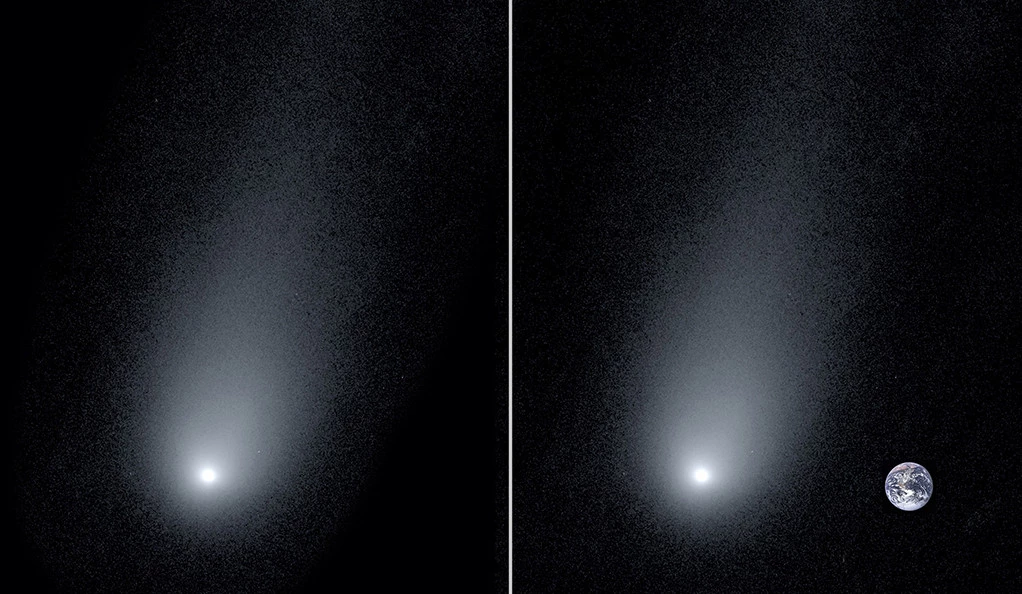Scientists have captured a close-up view of the ancient alien comet 2I/Borisov, which is currently careening through our solar system before it shoots back out into interstellar space. The comet is pictured sporting a massive elongated tail that stretches tens of thousands of miles in its wake.
2I/Borisov was first spotted in late August, and, to the great excitement of the astronomical community, appeared to have originated from outside of our home solar system. Scientists believe that the icy traveler may have first formed around an alien star before being shoved into interstellar space by the gravitational influence of an orbiting planet. This tumultuous interaction set the comet on a long-haul, lonely journey through interstellar space, which is currently being punctuated by a brief sojourn in our neck of the cosmic woods.
The comet is the second recorded interstellar visitor to our solar system in recorded history, following hot on the heels of a fleeting visit by the unusually-shaped Oumuamua last year.
In early December, 2I/Borisov is expected to have its closest encounter with Earth, at which point it will pass roughly 150 million miles (241 million km) from our planet’s surface. For context, our Blue Marble orbits the Sun at an average distance of roughly 93 million miles (150 million km).
The new image of 2I/Borisov was captured by a team of astronomers from Yale University, using the Low-Resolution Imaging Spectrometer mounted on the W.M. Keck Observatory, in Hawaii.
The core of the comet can be seen as a super-bright point near the bottom of the image. This solid nucleus is trailed by the spectral shape of its corona and enormous tail. The team also created an image showing what it would look like if the primordial traveler passed close to our planet.
As the comet passes closer to the center of our solar system, its frozen body – which is thought to be around a mile across – is being slowly warmed by the radiation pouring out of the Sun.
Comets that are being warmed by solar radiation experience heightened periods of activity, during which vast quantities of dust and gas that had previously been contained in the core are expelled from the comet’s surface. This matter feeds into the comet’s tail and coma.
According to the astronomers behind the new comet portrait, 2I/Borisov has cast off enough matter to create a tail almost 100,000 miles long, or 14 times the diameter of our planet.
Source: Yale University




